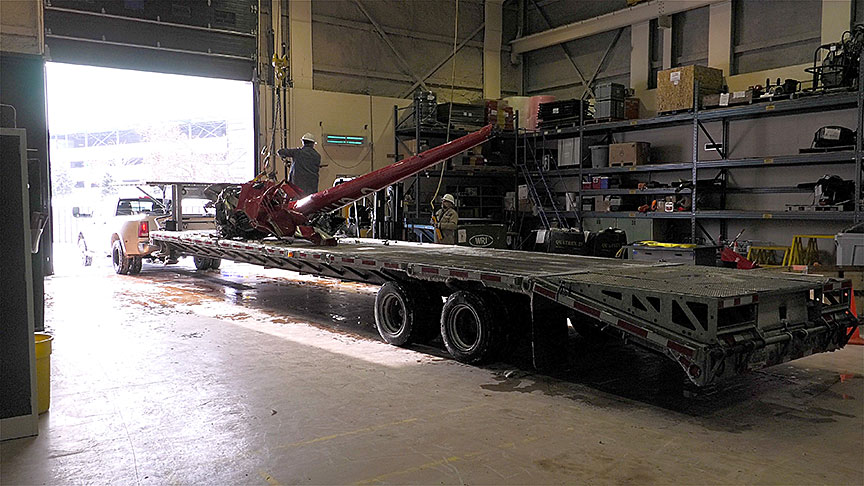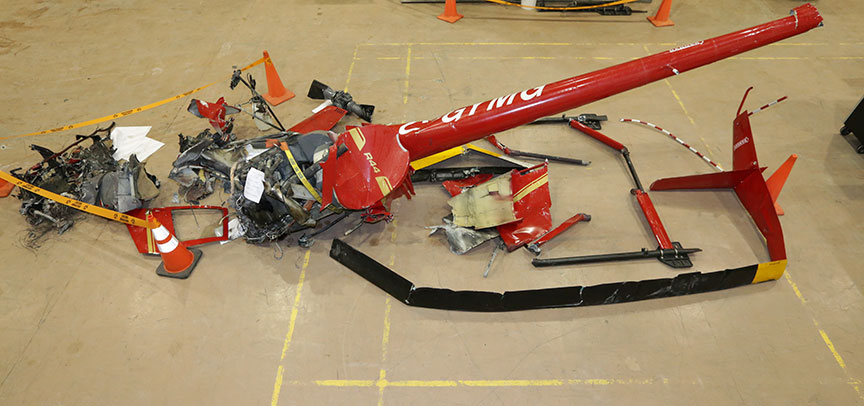Collision with terrain at night
Robinson R44 Raven I (helicopter), C-GYMG
Saint-Joachim-de-Courval, Quebec
The occurrence
On , at about 1945 Eastern Standard Time, the privately operated Robinson R44 Raven I helicopter (registration C-GYMG, serial number 2081) departed Saint-Georges de Beauce, Quebec, with the pilot and 2 passengers on board, on a night visual flight rules flight to Saint-Alexis-de-Montcalm, Quebec. At 2032, the Canadian Mission Control Centre received a distress signal from the helicopter’s emergency locator transmitter. At about 2135, the helicopter was found in a field in Saint-Joachim-de-Courval, Quebec, near Drummondville, Quebec. The helicopter was destroyed by impact forces and a post-impact fire. All of the occupants were fatally injured.
Media materials
News release
Collision with terrain involving a helicopter in Saint-Joachim-de-Courval, Quebec, demonstrates the risks associated with insufficient recent experience in instrument flight
Read the news release
Deployment notice
TSB deploys a team of investigators following a helicopter accident near Drummondville, Quebec
The Transportation Safety Board is deploying a team of investigators following a helicopter accident near Drummondville, Quebec. The TSB will gather information and assess the occurrence.
Investigation information
Download high-resolution photos from the TSB Flickr page.
Class of investigation
This is a class 3 investigation. These investigations analyze a small number of safety issues, and may result in recommendations. Class 3 investigations are generally completed within 450 days. For more information, see the Policy on Occurrence Classification.
TSB investigation process
There are 3 phases to a TSB investigation
- Field phase: a team of investigators examines the occurrence site and wreckage, interviews witnesses and collects pertinent information.
- Examination and analysis phase: the TSB reviews pertinent records, tests components of the wreckage in the lab, determines the sequence of events and identifies safety deficiencies. When safety deficiencies are suspected or confirmed, the TSB advises the appropriate authority without waiting until publication of the final report.
- Report phase: a confidential draft report is approved by the Board and sent to persons and corporations who are directly concerned by the report. They then have the opportunity to dispute or correct information they believe to be incorrect. The Board considers all representations before approving the final report, which is subsequently released to the public.
For more information, see our Investigation process page.
The TSB is an independent agency that investigates air, marine, pipeline, and rail transportation occurrences. Its sole aim is the advancement of transportation safety. It is not the function of the Board to assign fault or determine civil or criminal liability.

